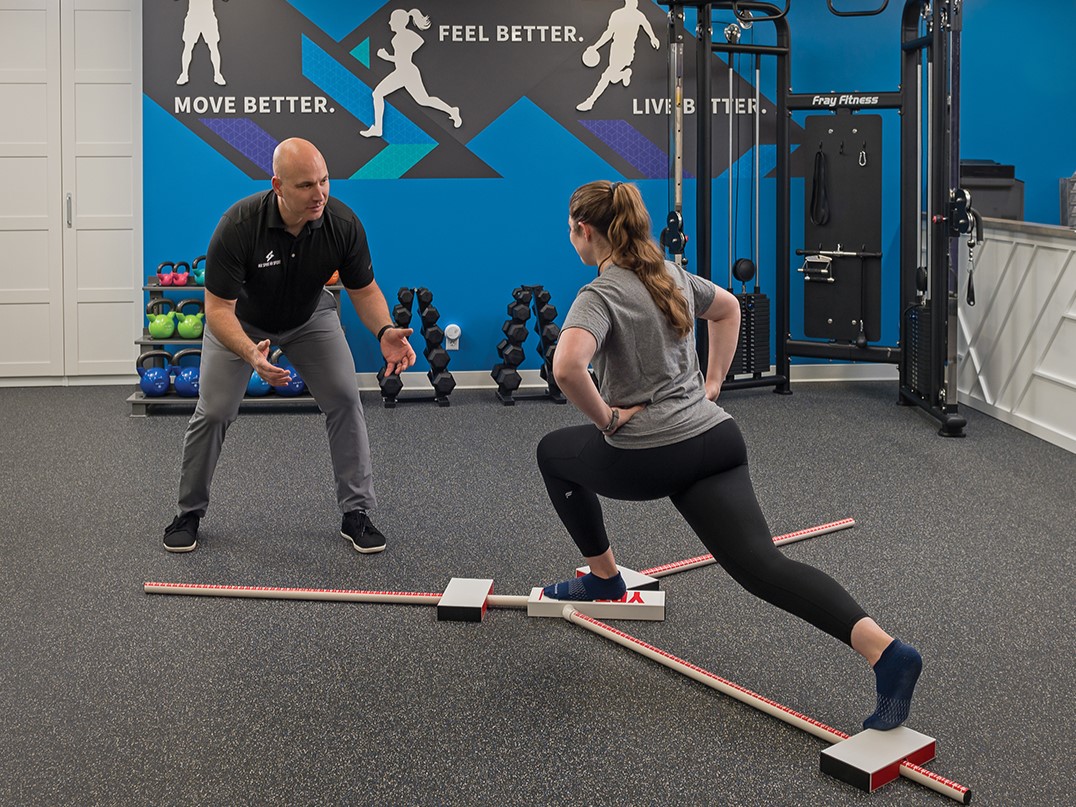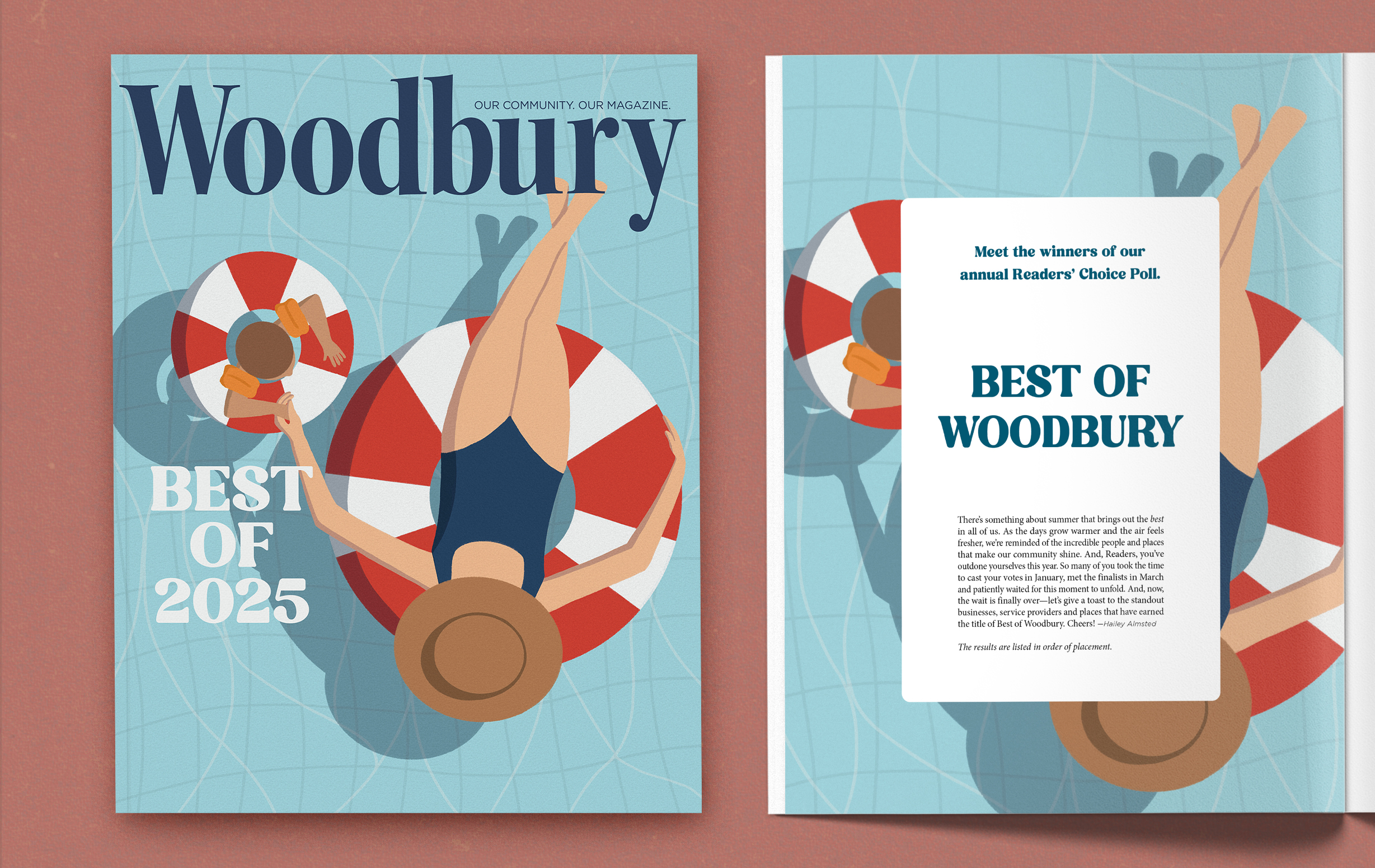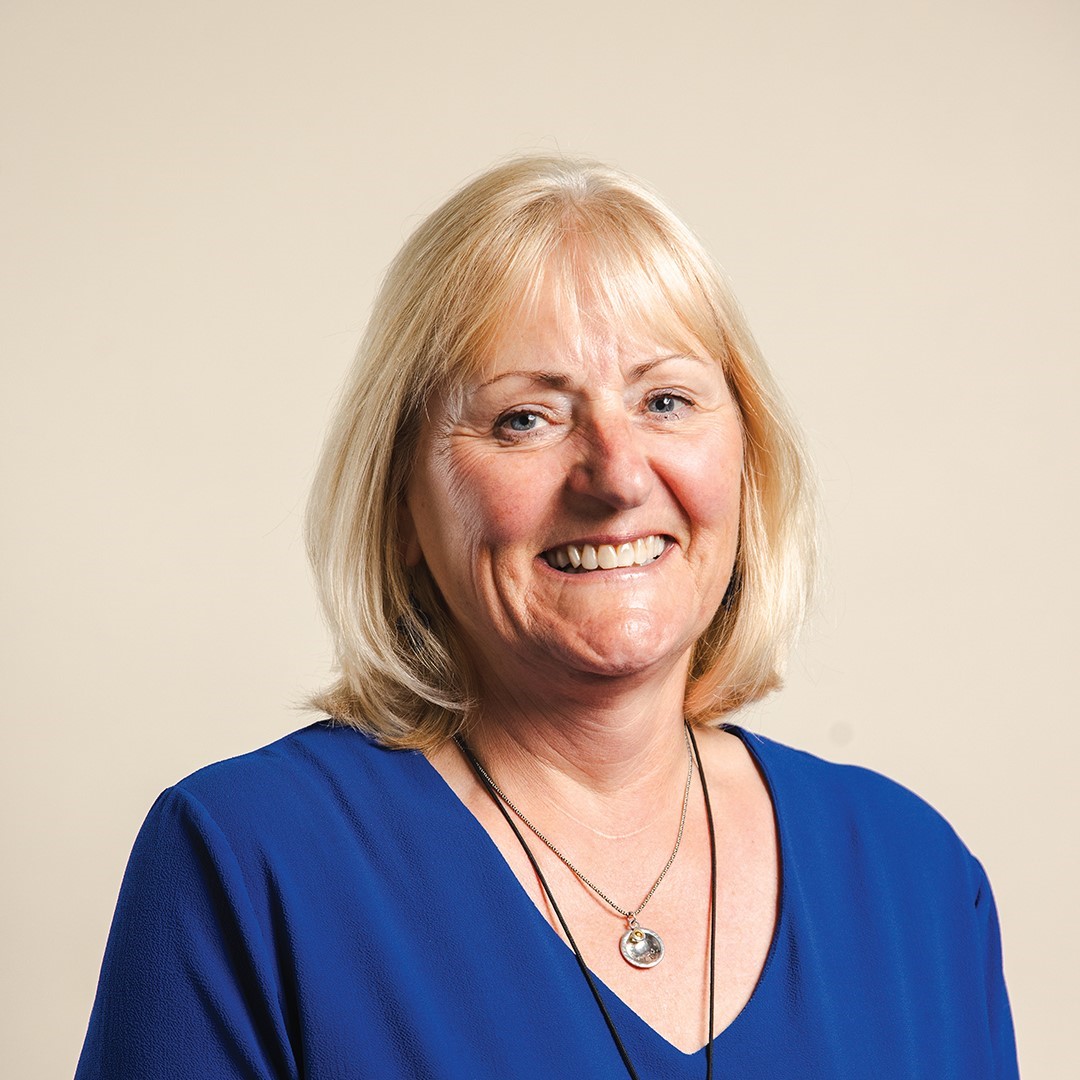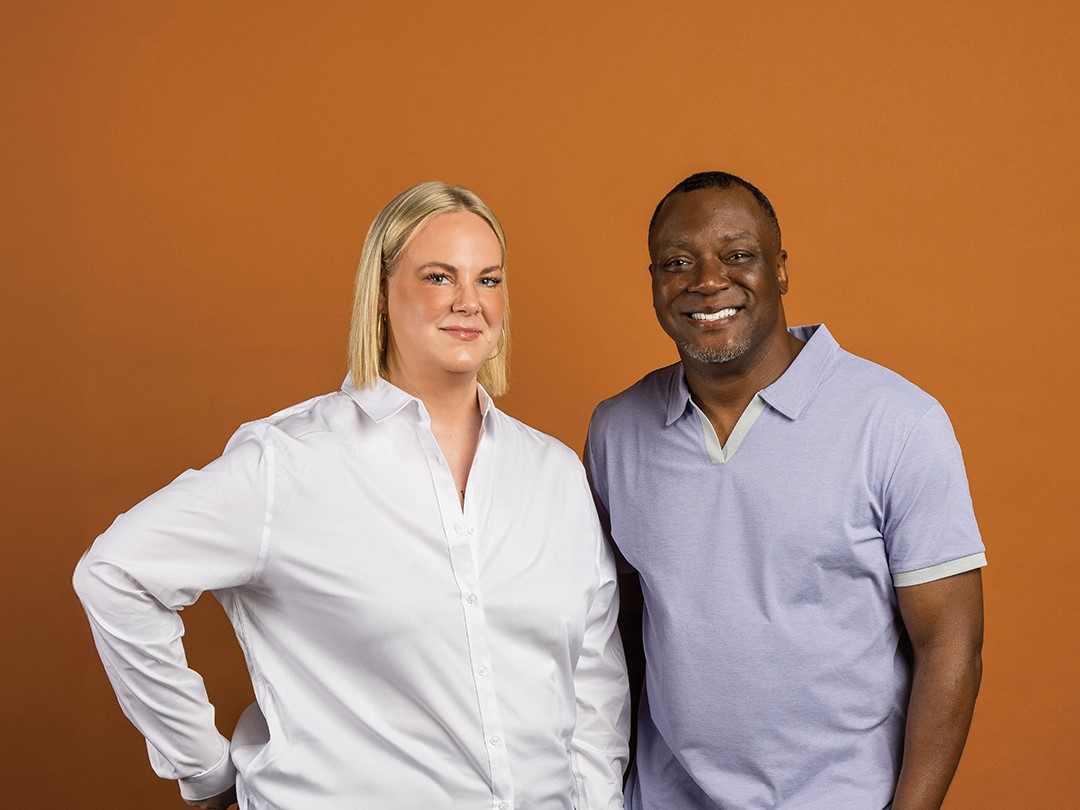
Photo: Tom Dunn
MN Spine and Sport is an award-winning sports and rehabilitation clinic.
The 50-year-old woman, who developed lower back pain while training for her first-ever marathon, might consider visiting Woodbury’s MN Spine and Sport, an award-winning sports and rehabilitation clinic. So might the 30-year-old rec league hockey player, who can’t shake a shoulder injury or the 80-year-old man who struggles to get out of his favorite chair.
“The initial exam, which can last anywhere from 30 minutes to an hour, attempts to answer three questions,” says Scott Schreiber, D.C., D.A.C.R.B. “What’s going on? What are your individual goals? What’s preventing you from achieving those goals?”
Answers to these questions can be relatively quick like a chiropractic adjustment or complicated involving multiple modalities (treatment modes). MN Spine and Sport is experienced in acupuncture and dry needling, chiropractic manipulation, cupping, instrument-assisted soft-tissue mobilization, kinesiology tape, laser therapy, pulsed electromagnetic field therapy, therapeutic exercises and traction.
MN Spine and Sport has two specialists: Schreiber, who focuses on patients with chronic pain, and Haley Balego, D.C., who focuses on sports patients and injuries.
Common conditions treated include back and neck pain, headaches, car accidents, work injuries, chronic pain, jaw pain, sports injuries, disc herniations, neuropathy, tendonitis and bursitis.
“People see going to a chiropractor as getting an adjustment and getting out,” Schreiber says. “That works for a lot of people but not for everyone.”
Schreiber goes on to use an old-timey rotary phone as an analogy. He asks, “It works, but is it best?” Best, oftentimes, can be a combination of treatment methods: chiropractic manipulation and acupuncture, for example, or therapeutic exercise and kinesiology tape.
“The model is a three-legged stool,” Schreiber says. “One leg is science. One leg is provider experience, and one leg is patient values.”
Changing Places
Motivational speaker Wayne Dyer once said, “If you change the way you look at things, the things you look at change.” Schreiber is an advocate for change, as is his MN Spine and Sport practice. “If you don’t keep up with the latest and greatest, you’re going to be left behind,” he says.
Acupuncture and dry needling are perfect examples. While the practice itself is more than 2,000 years old, its use in the United States is relatively new. Many holistic practitioners believe that acupuncture can assist in restoring positive energy. In Western medicine, it can be used to decrease pain and swelling, relax muscles and reduce stress and anxiety.
Cupping, or the placement of glass or plastic cups on the skin to create negative pressure (suction), brings blood and nutrients to the injured area. The practice has been used in traditional medicine for hundreds of years.
MN Spine and Sport uses silicone cups in its cupping therapy. Not only are these cups more conforming, but they can be used during functional movement. Schreiber says results can include a decrease in muscle tightness, decrease in pain and an increase in range of motion.
Another modality of healing includes kinesiology tape, which Schreiber has been using for more than 15 years. When applied correctly, he says the tape helps restore posture, decreases swelling and inflammation and prevents muscles from over contracting.
Treatment Techniques from Schreiber
Acupuncture/dry needling: Needles, roughly the thickness of hair, are inserted into trigger points and manipulated, causing the needled muscles to slightly contract. This results in deactivating the trigger areas. Pain is reduced and range-of-motion is improved. Acupuncture is said to relieve pain and swelling, relax tight muscles and decrease stress and anxiety.
Cupping: Cupping involves creating suction on the skin by using glass, ceramic or plastic cups. Negative pressure is created in the cup by either applying a flame to the cup to remove oxygen before placing it on the skin or attaching a suction device to the cup after it’s been placed. Cupping is said to bring blood and nutrients to an injured area, resulting in a decrease in muscle tightness and pain and an increase of range-of-motion.
Kinesiology tape: Kinesiology tape is a flexible tape that stimulates receptors in the skin, which can help to decrease pain in a specific area. It works by lifting skin away from muscles and fascia. Blood enters the area and accelerates the healing process. Unlike traditional athletic tape, kinesiology tape is stretchy, allowing movement rather than restricting movement.
Laser therapy: Laser therapy is a treatment that uses focused light to stimulate photobiomodulation PBM. The resulting interaction triggers a string of biological events that lead to an increase in metabolism, which can decrease pain and inflammation.
Pulsed electromagnetic field therapy (PEMF): PEMF involves directing pulsed electromagnetic waves toward damage or injury. The waves pass through cells in a damaged region, giving the damaged cells a boost of energy. The increase in energy, in turn, helps the injured cells repair themselves. Benefits include a decrease in bruising, decrease in swelling and a decrease in inflammation.
Meet MN Spine and Sport
MN Spine and Sport has been serving the East Metro since 2015. In May 2023, it expanded to a new 3,100-square-foot facility located in the Valley Creek Commons Building. Owner and clinical director Scott Schreiber, D.C., D.A.C.R.B, has been practicing since 2006. In 2018, he was voted Rehabilitation Chiropractor of the Year by the American Chiropractic Association Rehabilitation Council.
Consult your primary care physician or other qualified healthcare provider with any questions regarding a medical condition or treatment.
MN Spine and Sport
8360 City Centre Drive Suite 120; 651.459.3171
Facebook: MN Spine and Sport
Instagram: @mnspineandsport






















